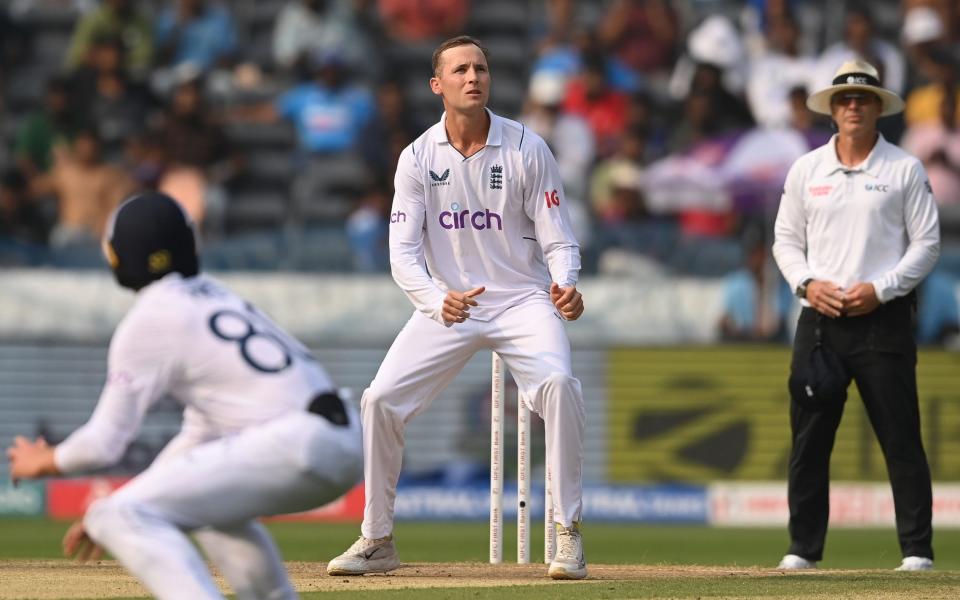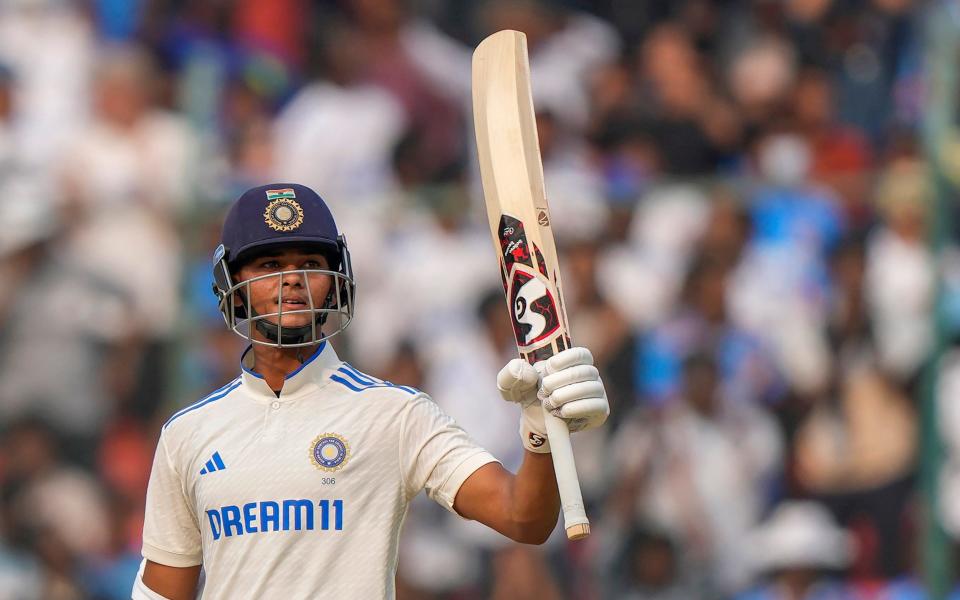Tom Hartley suffers baptism of fire like Simon Kerrigan – but with one key difference

Your whole professional life has been building up to this moment: bowling your first ball in Test cricket. Holding the ball in your hands in Hyderabad is vindication for years of toil and for the sacrifices of all those who have made that journey possible.
If you are Tom Hartley, you stroll in, land the ball reasonably enough - on a good length, just outside the left-hander’s off stump, hoping that it will curve back in to threaten the stumps. Instead, Yashasvi Jaiswal greets you with a slog-sweep, launched over deep midwicket for six.
It is a myth that India is a welcoming place for spinners. Shane Warne averaged 43 in Tests here; Muthiah Muralidaran, 45. Since 2013, away spinners average 41 in India – two runs more, indeed, than they do in England.
Overseas spinners’ first challenge is the absurdity of comparisons with India’s own spinners. Hartley, with a first-class average of 36.6, was picked because his height and pace were seen as resembling that of India’s left-armers, Ravindra Jadeja and Axar Patel, who have a combined 241 Test wickets at 19.8 in India. The second challenge facing overseas spinners is who they have to bowl to: many of the most accomplished players of spin in the world.
The third challenge is to be thrust into an unfamiliar role. Bowling in the County Championship – being expected to contain with the old ball while fast bowlers rest-up; the Dukes ball; the seam-friendly pitches – is almost the antithesis to bowling in Test cricket in India. Awareness of as much is why Hartley found himself in Hyderabad at all: England believe that it makes no sense to rely on Championship records when picking their side, instead seeking skills that could translate to the five-day game.

It is often said that, when they are picked for international sport, athletes should not aim to change, but simply to carry on as if playing for their domestic sides. Except Hartley was immediately charged with performing a role he has never done in professional cricket: opening in a first-class match. Jaiswal was ready, with the eagerness of a bailiff awaiting a bankrupt: two slog-swept sixes in the left-armer’s first five balls suggested a premeditated plan to attack.
By Hartley’s second over, it was not only good balls that were being hit for boundaries; he was bowling bad balls that were being hit too. He dropped too short; Jaiswal rocked back and swatted a four. When Jaiswal ended the over by using his feet and crunching a boundary through the covers, Hartley took his cap nursing figures of 0-25 from two overs.
Ordinarily, he might have now been expected to be whisked out of the attack. This was the experience of the last 24-year-old Lancastrian left-armer to be picked for England in Test cricket. After two overs against Australia at The Oval in 2013, which leaked 28 runs, Simon Kerrigan was taken off. “It turned from a dream into a nightmare,” he recently said. “I remember the tunnel-vision, the sweaty palms, my heart racing.”

Kerrigan didn’t bowl again for 30 overs, ending with figures of 8-0-53-0 in Australia’s first innings. Alastair Cook, England’s captain, didn’t even ask him to bowl at all in the second. “Now I wonder if I might have had a try over the wicket as it was quite a dusty pitch,” Kerrigan said. “I know now that you’re only one ball away from turning things around.”
Such has always been Ben Stokes’s thinking. Aware that taking off Hartley might have risked damaging him as it had done Kerrigan, Stokes persisted with him for nine overs. Desperation to help Hartley claim his maiden Test wicket even led England to squander two of their three reviews; they had burned all three by midway through the 14th over.
As Hartley continued, two no-balls betrayed nerves. Yet he also hinted at the qualities that England identified: beating Rohit Sharma with consecutive deliveries, and almost trapping Shubman Gill lbw. Revealingly, these balls were all against right-handers. When bowling to Jaiswal, and so turning the ball in, Hartley leaked 44 from just 26 balls, compared to 17 in 30 balls to right-handers, suggesting that he might ideally have been better-served being held back until the sole left-hander in India’s top six was dismissed. For all that Kerrigan and previous English spinners had reason to envy Stokes’s backing of Hartley, the suspicion was that he suffered from too much backing: boundary-riders at the start of his spell might have prevented Jaiswal beginning with such haste.

While Hartley returned 0-63 from his nine overs, Jack Leach, England’s other left-arm spinner, took 1-24 from his own nine. Yet no one is better-placed than Leach to sympathise with Hartley. In his own first Test in India, three years ago, Leach was thumped for 77 in his first eight overs, having been targeted by another dynamic left-hander, Rishabh Pant.
Leach’s success since has been built on the resilience that all spinners need, benefiting from being empowered by Stokes. For all the difficulties of his opening Test spell, Hartley need not worry about the traditional English spinner’s foe: captains more focused on what you cannot do than what you can.

 Yahoo Sport
Yahoo Sport 





































